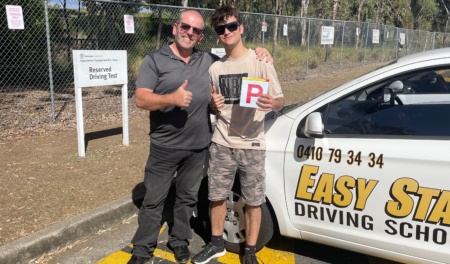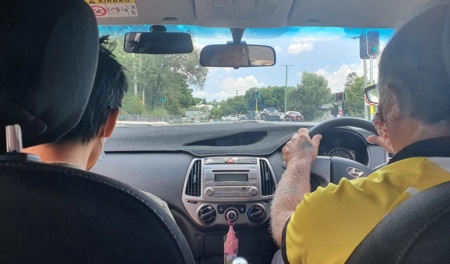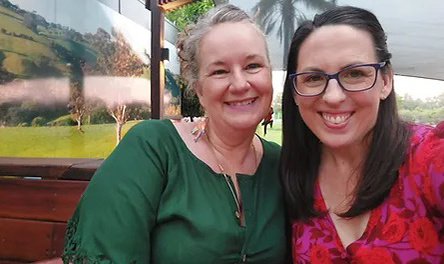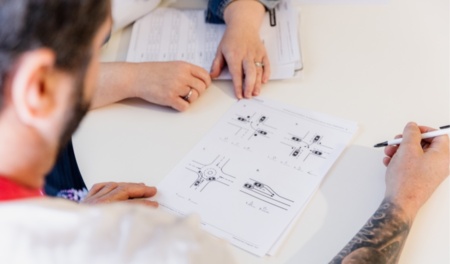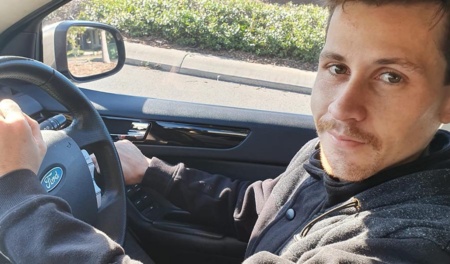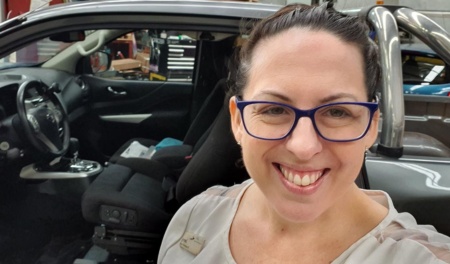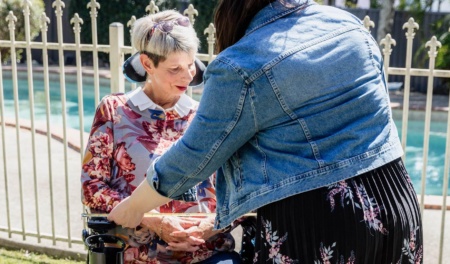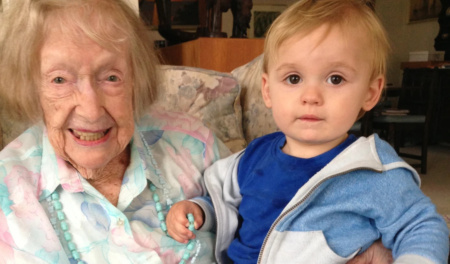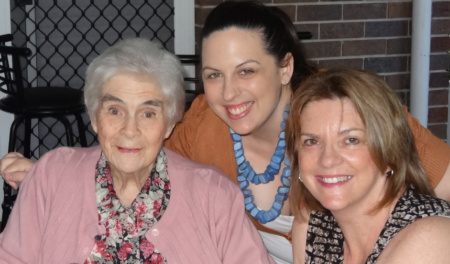Vehicle Modifications
There are many options for Vehicle Modifications for Driving including:
- spinner knobs
- hand controls
- left foot accelerators
- high level electronic hand controls
- transfer aids
- wheelchair stowage hoists
- wheelchair access
- Drive from electric wheelchair
Your OT driver assessor will guide you in what further steps are required – this may include appointment/s to trial various vehicle modifications. If vehicle modifications are needed for driving, you will also likely have on-road re-assessments to review progress and confirm that the driving controls will be suitable for you long term.
You will be advised what further documentation is required.
- Proof of purchase
- Vehicle registration
- Vehicle insurance
- Safety certificate
Your OT driver assessor will commence the vehicle modifications application and submit to NDIS.
We will assist in case management of your modification.
An OT handover assessment is completed with the OT driver assessor and driving instructor on completion of the modifications, to ensure that everything is working the way it should for you.
Vehicle criteria – “suitable to modify”
Insurers have varying criteria about age and kilometres of the vehicle, which is considered to be “suitable” to modify. NDIS require no older than 5 years and no more than 80,000km – however, when minor modifications are being completed (including hand controls) which can be transferred to the next vehicle, they will usually accept this as long as the Safety Certificate is also provided.
For structural conversions of vehicles (for example, lowering the floor for wheelchair access), it is best to have as new a car as possible, so that it is sustainable and reliable for you – you’ll have it for about 10 years!
“Future proofed”
- Vehicle modifications for driving and/or vehicle access must be “sustainable for you over the lifetime of the vehicle” (considered to be 8 to 10 years in Australia).
- The OT driver assessor will talk with you about the nature of your medical condition / disability, prognosis, and consider whether the modifications will be suitable for you over the next 8 to 10 years – this may mean planning for the need for a wheelchair accessible vehicle and electric wheelchair.
- The OT driver assessor may require supporting letters from Specialist doctors (eg Neurologist) and physiotherapist to help determine the best vehicle set-up for you, and to support the application for the modifications.
“Whole of task completion”
For drivers: the modifications recommended must achieve independence with “whole of task completion”
- independence with driving
- independence with access / transfer into driver’s seat/position
- independence with stowing / securing wheeled mobility device (eg scooter, manual wheelchair or electric wheelchair)
- independence with many tasks in the community eg going to physio, cafes, doctor, bank, post office, movies, seeing friends, leisure activities, light shopping
- NDIS will likely reduce support worker hours for community access and transport allowances.
“Reasonable and necessary criteria”
Vehicle modifications must meet the reasonable and necessary criteria:
- Support will enable you to pursue your goals
- Achieve social and economic participation
- Value for money
- Effective and beneficial
- Reasonable expectations of informal supports
- Most appropriately funded by NDIS (or your other insurer)
OT Driving Assessment Process
Intake / Referral
You have a medical condition / injury / disability and likely need modifications for driving (eg hand controls, left foot accelerator, wheelchair accessible vehicle), or you already drive with vehicle modifications and are upgrading your car.
Paperwork Required
Please ensure you have uploaded the following documents to the Client Portal and have them available on the day:
- Current Driver’s Licence:
- Please check the expiry date on your driving licence.
- If your driving licence is not current, take your QLD Transport Medical Certificate to the Transport Department to get a temporary licence – this will cost about $87 for 12 months.
- You cannot drive in the driving assessment without a valid licence.
- Current QLD Transport Medical Certificate (QTMC):
- This is a QLD Transport requirement
- Obtain this from your GP, MUST state “medically stable for purpose of OT driving assessment / driving lessons only”.
- You will need to take this QTMC for processing to QLD Transport prior to your appointment.
- GP Referral / Medical History
Medical history and medications - Optometrist Report if required by Doctor
- If relevant: hospital discharge summary / other medical/allied health reports; wheelchair information
- Current Level of Function Information:
- Tell us about your disability and current function eg weakness in right arm and leg.
- Tell us about your mobility and transfers, eg walking / independent with manual wheelchair or electric wheelchair / hoist transfer etc
- Tell us about your current car (year, make, model, kilometres)
- Current Driver’s Licence:
This information will help us determine which vehicle modifications may be required for you, and help us with booking the driving instructor.
Assessment
What is involved in an Occupational Therapy driving assessment?
1.5 hour Clinical Assessment: Client and OT Driver Assessor
- medical /disability history and medications
- driving history
- physical, cognitive and vision function screen
- road law knowledge screen
1 hour Practical Assessment: Client, OT Driver Assessor and Specialised Driving Instructor
Note: Driving Well OT partners with about half a dozen specialised driving instructors who are independent business owners; the driving instructor is selected and booked, based on geographical location, type of service, anticipated match, and availability.
- The practical assessment is a drive in the specialised driving instructor’s car, with the driving instructor in the front passenger seat, and the OT Driver Assessor in the rear left seat. The drive usually commences from your home or from our partnering vehicle modifier (Alternate Mobility at Slacks Creek).
- Trial of the selected vehicle modifications to look at driving performance in the following areas:
- observation skills
- speed control
- planning and judgement
- vehicle positioning
- physical control and reaction time
- insight into driving performance
Everyone will be at a different stage with the vehicle mods journey:
Beginner: demonstrating some initial learning; OTDA able to recommend a specialised driving training program (eg previously experienced driver 5 – 10 lessons; learner driver 20 – 30 lessons). OTDA re-assessment/s will be required to review progress (suitability to continue / suitability to commence vehicle mods application to NDIS).
Intermediate: takes well to all primary controls; may need 2 to 3 lessons to finalise the mods, followed by an on-road re-assessment to check suitability to commence vehicle mods application to NDIS.
Advanced: takes to all primary controls very well and demonstrating competence (usually only when replacing like-for-like controls), and ready for OTDA to submit a vehicle modifications application to NDIS.
Higher needs: may only be able to do some components of the primary controls initially, and further trials/assessment may be needed.
The OT Driver Assessor will talk with the Driving Instructor at the end of the drive, to determine the outcome of the assessment.
The assessment CANNOT be completed in the client’s own vehicle as it is not set-up with vehicle modifications or dual controlled brakes. Every OT driving assessment will be completed in the driving instructor’s car with dual controls, so the driving instructor can intervene if there is an emergency situation.
Possible Outcomes
For every OT Driving Assessment, there are three possible outcomes:
“Pass”: medical condition is not impacting on driving and therefore safe to continue driving with the vehicle modifications (after seeing GP for review of report, upgraded QTMC is gained and processed at TMR)
“Driving program”: (this is the most common outcome)
- Requires lessons with the specialised Driving Instructor to learn to drive with the new vehicle modifications.
- An on-road re-assessment/s is usually required after the lessons.
“Fail”: medical condition is impacting on driving and have not demonstrated potential to learn to drive with modifications; recommendation that the licence will be cancelled and the person is recommended to retire from driving.
After the Assessment
- Book an appointment to see your GP/Specialist for at least 5 BUSINESS DAYS following the driving assessment.
- Make arrangements (family/friend/taxi/public transport) to attend your GP/Specialist appointment.
- The GP/Specialist will review the report, and if they are in agreement with the recommendations (in pass and rehab outcomes), they will provide you with an updated QLD Transport Medical Certificate.
- When a driving program (lessons) are recommended, the OT driver assessor will submit the OT driving assessment report and quote for the number of recommended lessons from the driving instructor provider, to the NDIA
- “Specialised driving training” is a quote required item, which needs to be approved by NDIA and added as a line item to your NDIA plan under Capacity Building: improved daily living (Specialised driver training 15_046_0129_1_3)
- This applies even if you have a goal regarding driving / community access, and even if you have sufficient budget in improved daily living.
- Once you have written approval from the NDIA (and the line item is added to your NDIS plan), you are able to book your lessons directly with the driving instructor. (Note – as at October 2022, this is taking months to gain approval).
- If you are with another insurer, a quote and report is provided, and the insurer must approve the quote to commence lessons.
- Clients can commence self-funded lessons, however NDIA does not reimburse lessons already paid
- For learner drivers: NDIA does expect the client to contribute to the cost of the lessons and may require the client to co-fund the lessons or show evidence of funding additional lessons as part of the approval process.
- For clients who require additional modifications – OTDA will discuss and recommend trials of additional modifications to ensure suitability (the following is not an inclusive list):
- Wheelchair hoist
-
- Boot style crane hoist
- Roof-top “Wymo” or “Chair topper” hoist
-
- Wheelchair hoist
-
- Internal transfer seat
- Turny seat
- For clients who require wheelchair access – OTDA will discuss and recommend options for a vehicle that will be suitable (the following is not an inclusive list):
- Large van styles:
-
- Toyota Commuter
- Ford Transit
- Renault Master
- VW Crafter
-
- Lowered floor styles:
-
- VW Multivan (front row and second row conversions)
- Kia Carnival (second row conversion)
- Hyundai Staria (second row conversion)
- VW Caddy (third row conversion)
- Renault Kangoo (third row conversion)
-
- Large van styles:
- OTDA will arrange trial of a demonstration vehicle with client and their wheelchair (note: for travel from wheelchair, the wheelchair must be crash-tested and meet the Australian Standards for wheelchair occupant travel).
- OTDA can assist with vehicle selection process from a functional perspective eg transfers, boot style, vehicle type; it will be up to client to make decisions on “normal” features of car. It is recommended that the client liaise with the vehicle modifier to ensure the car is suitable for modification prior to purchase. A joint consultation with OTDA, vehicle modifier, client and car may be required.Example:
Robyn was purchasing a new car to be able to return to drive with hand controls; she also required a portable folding scooter and crane style hoist in the boot. She liked the Hyundai Tuscon; we arranged for the dealer to bring the car and the scooter rep to bring the scooter to Alternate Mobility for a joint assessment:
- Robyn trialled the demo hoist to ensure that she could operate it
- Robyn could walk from the boot area to the driver’s door and transfer into the driver’s seat without difficulty
- The vehicle modifier inspected car and scooter to determine that this would be suitable for the hoist.
- OTDA will advise when a re-assessment is needed – this will be different for each client, dependent if they are beginner / intermediate / advanced driver with vehicle mods. Some clients will need multiple re-assessments; others will be able to have the re-assessment at the same time as their handover assessment.
- The on-road re-assessment follows the same process as the first on-road assessment.
- The “three possible outcomes” of a driving assessment remain.
- The OT driver assessor will complete another report and send this with recommendations to the GP.
- If you have passed, you will need to see your GP again, for the GP to review the report and if they agree, they will provide an upgraded QLD Transport Medical Certificate (to remove the restrictions of “driving with driving instructor only”).
- You must then take the upgraded QLD Transport Medical Certificate to QLD Transport for processing – then you can drive.
- OT driving assessment report and re-assessment report/s
- Up-to-date licence and QLD Transport Medical Certificate
- Quote for vehicle modifications
- Vehicle modifications application form (NDIS) or other report (other insurers)
- Letter of intention to purchase selected vehicle and consent to modify vehicle
- Letter of consent to modify vehicle
- Proof of contract (if new vehicle)
- Safety certificate (if vehicle is outside insurer criteria of kms/year)
- Registration
- Insurance
- Make sure your OTDA is aware! NDIS may not have informed OTDA of the approval.
- “Approval-in-principle”: client to purchase vehicle, and supply documentation to the NDIS planner:
- Proof of contract (if new vehicle) and VIN
- Registration
- Insurance
- Client to book job with vehicle modifier (note lead and turnaround times) and advise OTDA of dates, so that a handover assessment can be booked.
- Please triple check that the following are all up-to-date:
- Car insurance
- Licence
- QLD Transport Medical Certificate
- Handover assessment is conducted in the client’s own modified car with the driving instructor and OTDA, to ensure that everything is set-up appropriately for the client.
- Client may not be able to drive their vehicle home – this will depend on the QLD Transport Medical Certificate.
- It is preferable that this assessment is done on-site at the vehicle modifier, so that if any adjustments are needed, they can be completed on-the-spot.
- OTDA will take photos of the vehicle, you driving, compliance documents, and complete a post-mod evaluation report.
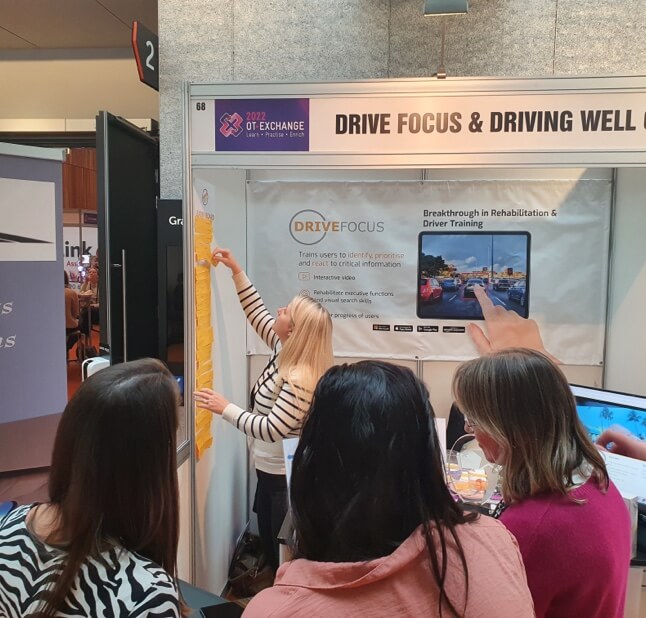
Drive Focus has won awards in Australia!
- Finalist for Best Assistive Technology Product at Australian Disability Services Awards, November 2022
- Winner of Technology Category at Australian Road Safety Awards, June 2021
This is a fantastic app (on apple ipad or android tablet only), that helps to focus your visual searching skills for driving. The app is American but has Brisbane and Melbourne real-life driving videos, where you have to tap on all the “critical items” during the drive.If you need to buy a tablet device, the android version of the app has more functionality (with easier to read “review your score”, email your results to your OT, and also has the Melbourne tour available now).
The app costs about $20AUD and was developed by a driving OT and researcher in America and has had research studies that show it helps to reduce driving errors. It is “brain training for driving”!
Here is a one-minute video about the app: Watch the video
We encourage all of our drivers to purchase and practice using this app – you will really find that it helps to improve your alertness on the road.

